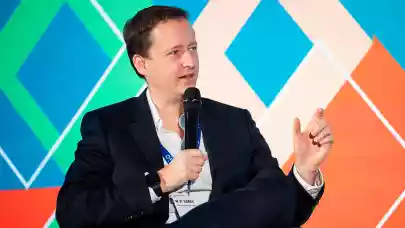
Tomáš Vrbický, Founder of Czech development company Noho, talked to Property Forum about the recent energy crisis's positive impact on the sustainable housing approach. According to him, the crises also helped people to think about “green” housing more deeply and be more willing to pay extra for such living with unique solutions for energy savings as it can enormously reduce energy costs in the future.
To what extent are households conscious of energy costs and interested in energy security? Has the situation changed in this respect from what it was 10 years ago, for example?
The situation has changed a lot in recent years. While in the past people generally looked mainly at price and a healthy living environment when buying a home, today energy savings are a much more significant factor. This is nicely illustrated by the example of three years ago when we handed over flats in Hradec Králové as part of the first phase of the Cihlovka project and asked the new owners why they chose these flats: almost no one mentioned energy efficiency, which goes hand in hand with our overall sustainable approach to construction. Soon afterwards, however, energy prices began to rise steeply, and the benefits of modern housing oriented towards not only saving the planet but also reducing the running costs for its residents became fully apparent. We later received reports from people that, thanks to the installation of photovoltaics, among other things, the rising prices had not affected them. When we started installing photovoltaics on our houses, though, this was not at all as commonplace and in demand as it is today, when it is much talked about, and when people are delighted to be offered cheaper electricity as part of their housing.
How has the recent energy crisis affected the business of your development company Noho in this respect?
The energy crisis has affected us to some extent, just as it has affected most other developers. Energy and material prices have skyrocketed, which has increased input costs. However, everyone on the market has had to cope with this. What I see as a great positive in our case, though, and which makes us stand out, is that we have been strictly following a sustainable approach in construction from the very beginning. That is, our primary motive was not purely economic, but fitted in with our philosophy that it is possible to build and live in greater harmony with our planet. It now appears that we are headed in the right direction, the bonus of which in this "new situation" is that we have not had to change or redesign our projects in any way, as they were already designed to be extremely sustainable, which will gradually become a clear standard for potential buyers.
What does it realistically mean for a developer to go down the path of building sustainable housing? Is it difficult to make a return on investment?
If a developer decides to take the path of truly sustainable construction, it is not possible to count on an immediate return on investment. But we don't think of it that way. Noho was created primarily as an alternative to conventional housing, to show that it can be done differently and that the real benefits will be seen quickly. However, given that we set ourselves more than ambitious goals for the sustainable aspects of our projects, we cannot slavishly convert individual solutions into crowns with this approach. Many of them are quite costly, which we cannot fully reflect in the selling price, and thus we lose part of the margin. However, we see this as being worthwhile for us as a company in the long run, and it is the right thing to do because sustainability is all about long-term solutions that should last for generations.
Are homebuyers in the Czech Republic willing to pay a premium for sustainable housing?
If the energy crisis has brought us anything positive, it may have been a little more public education about the sustainable approach to housing. It is still fair to say that we are at the beginning, but it is undeniable that change has begun. We are seeing more and more people willing to pay extra for "green" housing - but the primary motivation is more likely to be concern about high energy prices. So, the practical aspect wins out and environmental friendliness is a nice bonus. On the other hand, however, we are already seeing a trend among our buyers of a growing group of young people, between the ages of 20 and 30, for whom this approach is being reversed, and the good of the planet is becoming the dominant motive for buying sustainable housing.
Can you highlight some of the current trends in the sustainable building industry that you think are going to make a big impact in the coming years?
Photovoltaics, heat pumps, heat recovery and similar trends are already well established, and they will have an important place in sustainable construction in the future. However, if I were to highlight what we are currently dealing with at Noho, it would be the big topic of prefabricated products, for example. As part of the Neighbourhood Project, we are going to build one of our four houses out of CLT panels, which are made from perpendicularly glued layers of solid wood and have the advantage of a very low carbon footprint. This will be a pilot project, which will give us a great demonstration of how a building made of CLT panels compares to one made of conventional materials. According to preliminary calculations, we already know that CLT panels will be more expensive, but on the other hand, we will save on a markedly shorter construction time.
In addition, we would like to start using prefabricated bathrooms in the Neighbourhood project, which will be delivered ready to the site. This will, of course, further significantly shorten, and therefore cheapen, the construction schedule. This is also linked to the trend towards modular construction, which is based on the idea of prefabrication. Again, its biggest advantage is speed, and, thanks to advanced BIM software, the entire project design, production and assembly are significantly streamlined, and potential risks are minimised.
Then there is the trend of community energy, which our Noho Energy division is pursuing intensively. We will be combining the Brickworks project with the Neighbourhood project and other future smart grid developments. Brickworks 2 is now the first member of the community and will be joined by other completed projects in the neighbourhood. The community aims to take good care of, and save, energy resources so that all members benefit as much as possible. I am happy to illustrate this with another specific example: because of our commitment to supplying 100% green energy for each of our projects, we must look for other alternative sources, because green energy is only one-fifth of the market and rooftop photovoltaic panels only cover a small part of consumption. We are currently approaching selected municipalities about a suitable location for a wind farm. The village in question would then become part of the energy community and could draw energy directly from a local source. This will reduce their vulnerability to external suppliers, price fluctuations and distribution fees. At the same time, we can supply our projects with this clean energy and distribute the surplus to the grid. We can then use the money earned to support the communities where our wind farms are located. This is a brief example of how our agenda has gradually swelled and we have branched out from being a sustainable developer into the energy sector.
Alternative energy sources for households are in demand today. Which ones do you think are the most efficient for households and why? And how do you see it in the future?
The most important thing is to insulate the building well, i.e., not to consume more energy than necessary. If the building is well insulated, then the energy issues can start to be addressed. Of course, photovoltaics and heat pumps are effective sources. Another superstructure is an electricity storage battery, which we also have in Cihlovka 2. Deep-water heat pumps are a big benefit, and the Cihlovka 2 project has again confirmed this for us in practice. They are a stable source of energy with an almost unlimited lifetime. At the same time, they increase the value of the entire building, because it is very difficult to implement this technology retroactively.



